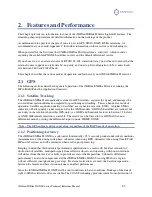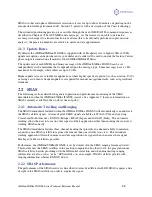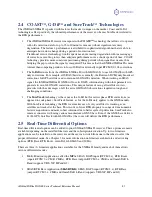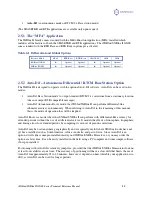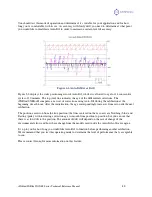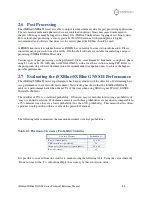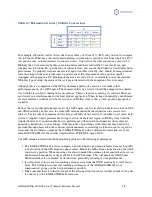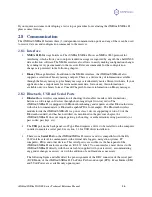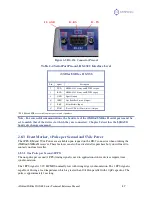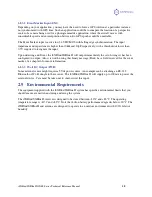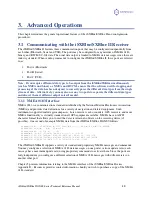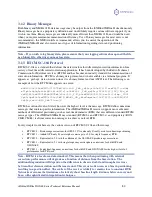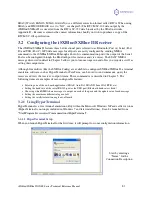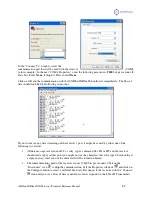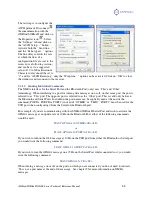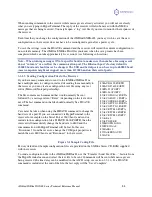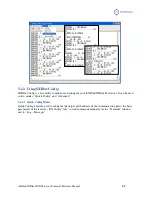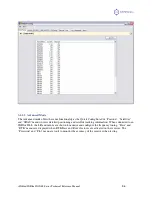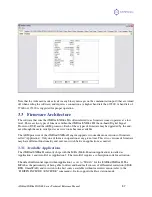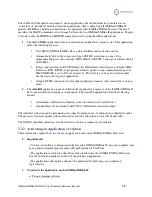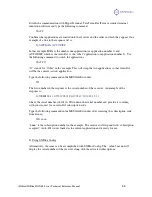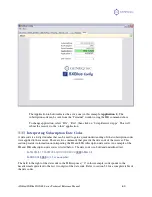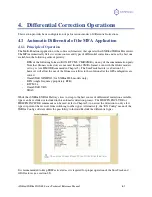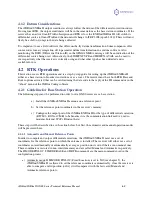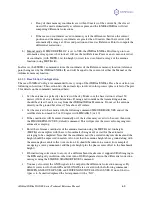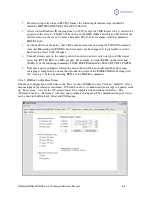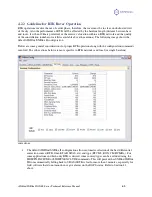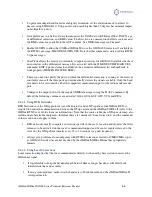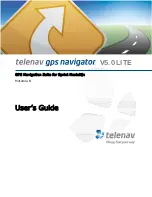
iSXblue/SXBlue II GNSS Series Technical Reference Manual
51
SBAS (WAAS, EGNOS, MSAS, GAGAN) use a different correction format called RTCA. When using
SBAS (and $JMODE,BASE is set to “NO”, see chapter 5) The RTCM SC-104 data output by the
iSXBlue/SXBlue II is converted from the RTCA SC-159 data broadcast by the SBAS networks.
Appendix D - Resources contains the contact information should you wish to purchase a copy of the
RTCM SC-104 specification.
3.2
Configuring the iSXBlue/SXBlue II Receiver
The iSXBlue/SXBlue II features three bi-directional ports referred to as Bluetooth (Port A), Serial (Port
B) and USB (Port C). GPS data messages for all ports are easily configured by sending NMEA
commands to the iSXBlue/SXBlue II through either of its communication ports (the output of the Serial
Port can be configured through the Bluetooth port for instance and vice versa). The $JASC NMEA
message discussed in detail in Chapter 5 allows you to turn messages on and off as you require as well as
setting their output rates.
Although free utilities (like the SXBlue Config) are available to configure iSXBlue/SXBlue II, a terminal
emulation software, such as HyperTerminal or TeraTerm, can be used to send commands, query the
receiver and view the receiver’s output stream. These commands are described in Chapter 5. The
following items are examples of user-configurable features:
•
Selecting one of the on-board applications (SBAS, Auto-Dif, LBAND, Local-Dif, RTK, etc)
•
Setting the baud rate of the serial RS-232 port or the USB port (Bluetooth baud rate is fixed)
•
Choosing which NMEA data messages to output on each of the ports and the update rate of each message
•
Setting the maximum differential age cut-off
•
Setting the satellite elevation angle cut-off mask
3.2.1
Using HyperTerminal
HyperTerminal is a free terminal emulation utility within the Microsoft Windows XP and earlier versions
(HyperTerminal is no longer included in Windows 7 and later installations). It can be launched from
“
Start
/
Program
/
Accessories
/
Communications
/
HyperTerminal
”
.
3.2.1.1
HyperTerminal Setup
When you launch HyperTerminal for the first time, it will prompt for some configuration information.
Start by entering a
“Name” for the
Connection Description.

